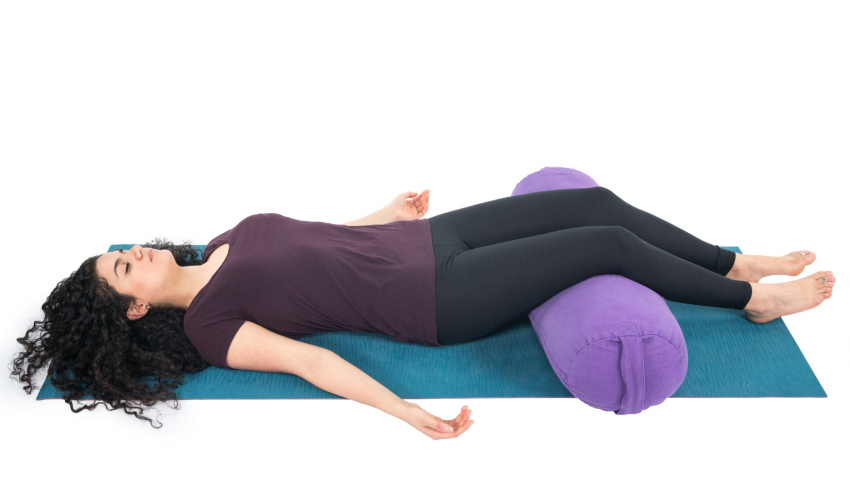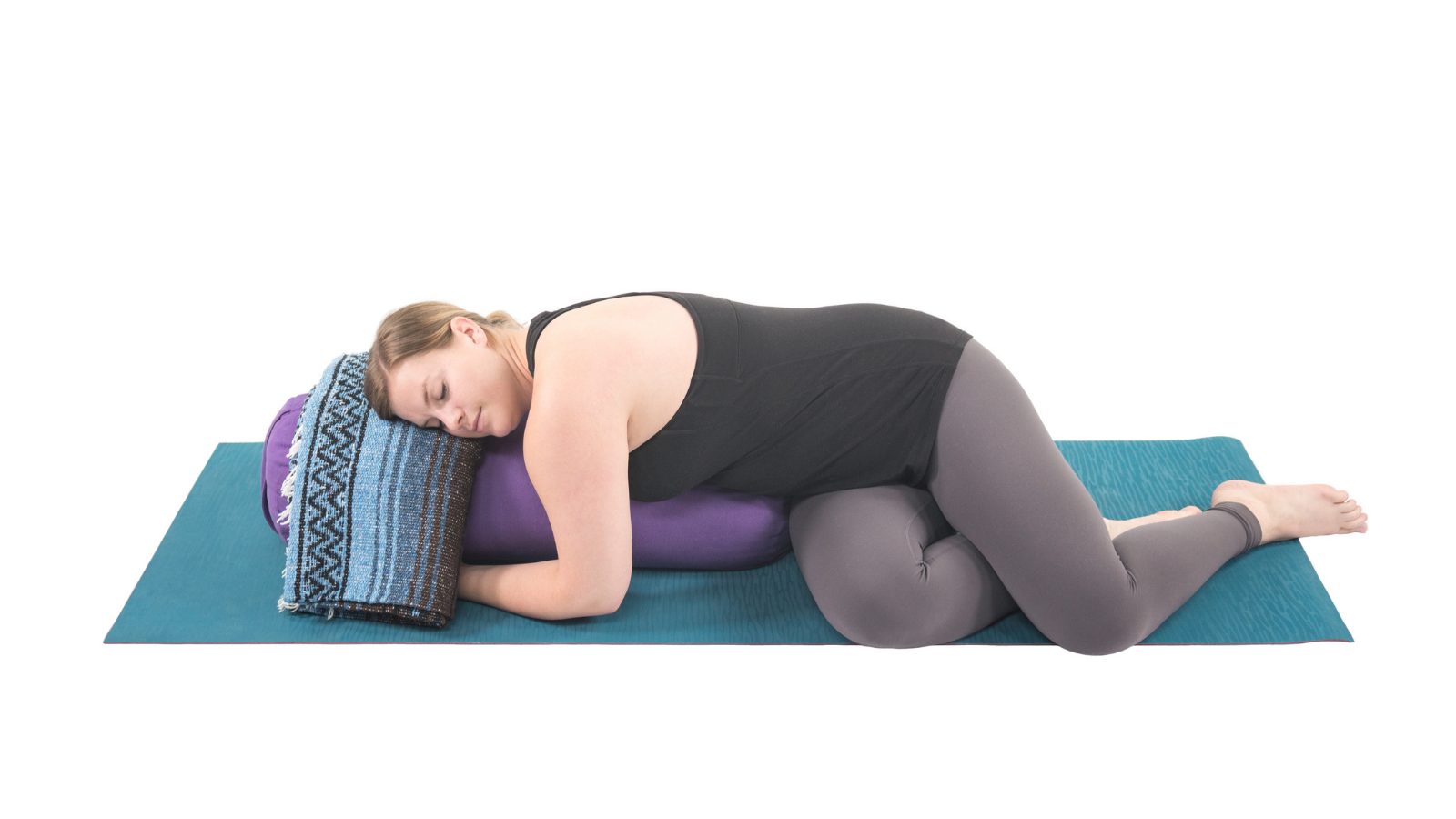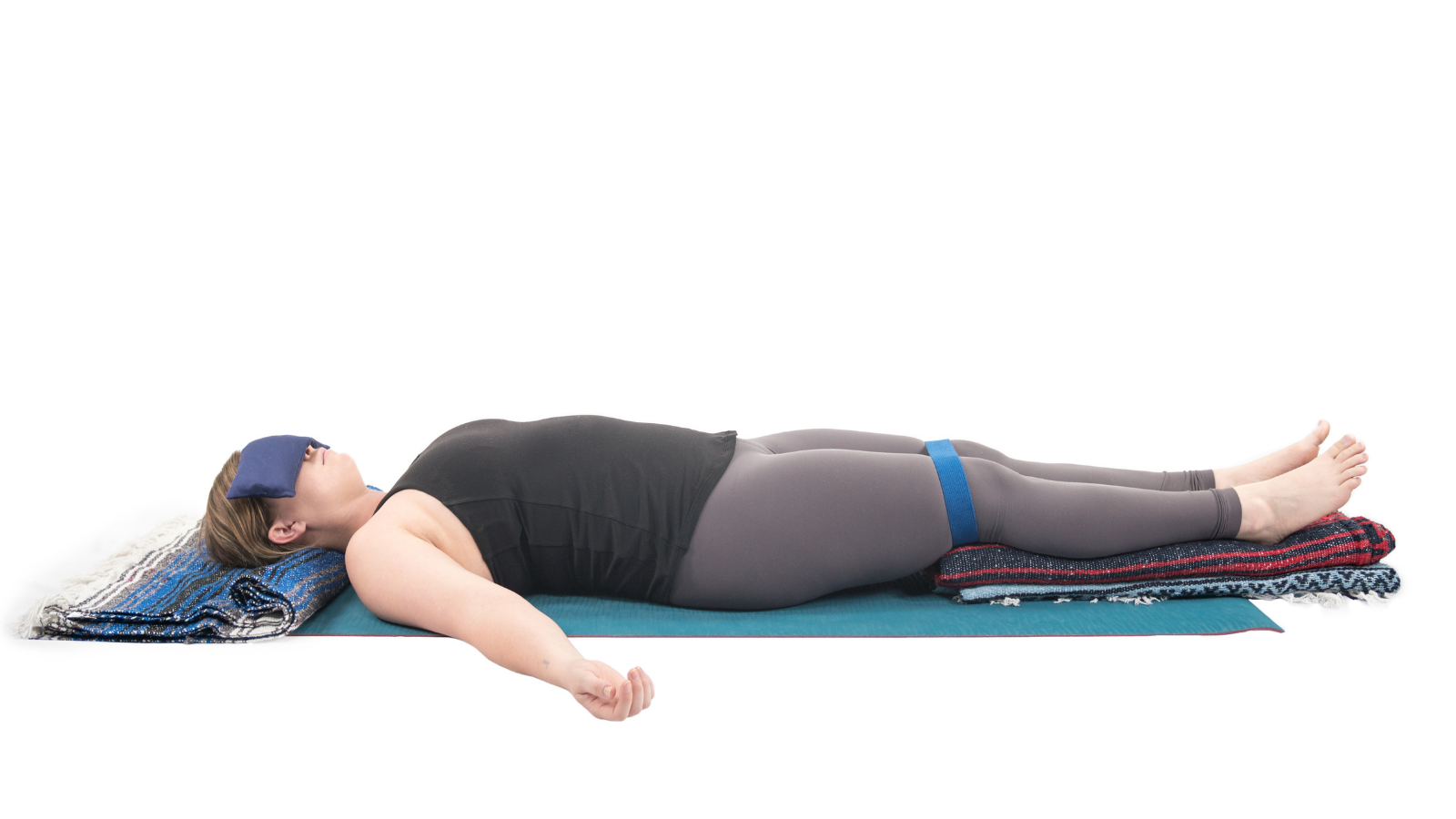View basket (0 items $0.00)

Down-Regulating the Nervous System - How to Use Restorative Yoga to Calm Body and Mind
Ever noticed that magical moment in yoga when our nervous system makes the switch from sympathetic to parasympathetic functioning?
Yes, the techniques of yoga afford a means to down-regulate the nervous system and shift from the go, go, go of a hurried lifestyle into a place of greater calm and well-being.
While that doesn’t sound like much, the implications of this can be truly profound and far-reaching through our bodies and our minds.
The Basic Anatomy of the Nervous System
The sympathetic nervous system is often referred to as our “fight-or-flight” response. Among other things, it is responsible for keeping us safe in dangerous situations. During the sympathetic response, our heart rates accelerate, pupils dilate so we can see better, blood rushes toward our skeletal muscles so that we have the ability to either fight for our lives or run for our lives, and so much more.
Contrarily, the parasympathetic nervous system is often referred to as our “rest-and-digest” response. This side of the autonomic nervous system is responsible for regulating activities such as digestion, restorative relaxation, sexual functioning, and more. This side of the nervous system is often analogous with the brakes on a car because it helps to slow down everything that the sympathetic nervous system revs up.
Both the sympathetic nervous system and the parasympathetic nervous system are crucial for our survival and daily functioning. One is not “better” than the other. They simply serve different purposes in the complex web of systems that make up the human body.
But in our modern go-go-go world, most people have a tendency to be sympathetic-dominant and lose the ability to effectively transition between these different branches of the autonomic nervous system.
This is where Restorative Yoga can help immensely because it can help to down-regulate the nervous system and reset into a calmer mode of functioning.
How to Down-Regulate the Nervous System with Restorative Yoga

The fact that it's possible to down-regulate the nervous system and shift to a more parasympathetic mode of functioning was first discovered in studies of people practicing Transcendental Meditation back in the 1970s. Studies showed that not only could these meditators consciously slow their heart rates, but they could intentionally shift their bodies into a parasympathetic state. This was groundbreaking research at the time.
In more current research, more and more knowledge is appearing on how we can use the techniques of yoga to regulate our physiological reactions and counteract the effects of the sympathetic nervous system to move the body into a parasympathetic state.
4 Steps to Use Restorative Yoga to Help in Down-Regulate the Nervous System
The following four basic components can help you set up the right conditions to achieve greater calm in your restorative yoga practice.
1. A Quiet Environment
To start, you need to find a quiet, comfortable space where you feel safe.
2. A Mental Focus
It is helpful to focus your mind on one, unchanging thing—a drishti or dharana of sorts. It can really be anything that allows you to hone in on one thing and release excess thoughts. Perhaps there is a clear focus on the breath and you unconsciously deepen and follow its rhythm. Or simply focus on the sensation of stretch in the body and allow your body to melt into the props beneath you.
3. Be and Accept
Restorative Yoga is all about acceptance and passivity. The body is placed in specific ways to be receptive to the downward force of gravity. You use lots of props to support your positioning so you can become physically passive. And all of this passivity inevitably makes its way into your mind as well. The more you’re able to surrender to what is, the more likely you are to allow the nervous system to settle down and shift into parasympathetic functioning.
4. A Comfortable Position
In order to effectively shift into a more relaxed mode of functioning, your body needs to be comfortable and relaxed. If you’re holding excessive tension in any muscles, then your nervous system will likely stay on “edge.” So you need to find a truly comfortable shape for your body to relax into. Of course, Restorative Yoga is all about finding comfortable positions. Whether you’re lying on your back in a Supported Savasana or relaxing over a bolster in a prone twist, all Restorative Yoga postures are designed to be comfortable and relaxing. It’s the perfect way to surrender and allow body and mind to begin to unwind.
Restorative Yoga is a beautiful practice to help you unwind, destress, and let go. So the next time you find yourself stressed out and wound up, take some time out to chill through a Restorative Yoga practice. Your body and mind will thank you for it.

 Leah Sugerman is a yoga teacher, writer, and passionate world traveler. An eternally grateful student, she has trained in countless schools and traditions of the practice. She teaches a fusion of the styles she has studied with a strong emphasis on breath, alignment, and anatomical integrity. Leah teaches workshops, retreats, and trainings, both internationally and online. For more information, visit www.leahsugerman.com.
Leah Sugerman is a yoga teacher, writer, and passionate world traveler. An eternally grateful student, she has trained in countless schools and traditions of the practice. She teaches a fusion of the styles she has studied with a strong emphasis on breath, alignment, and anatomical integrity. Leah teaches workshops, retreats, and trainings, both internationally and online. For more information, visit www.leahsugerman.com.
Resources
-
https://journals.plos.org/plosone/article?id=10.1371/journal.pone.0002576
-
https://www.health.harvard.edu/blog/using-the-relaxation-response-to-reduce-stress-20101110780
-
https://www.massgeneral.org/wellness/news/the-relaxation-response
Featured Courses









